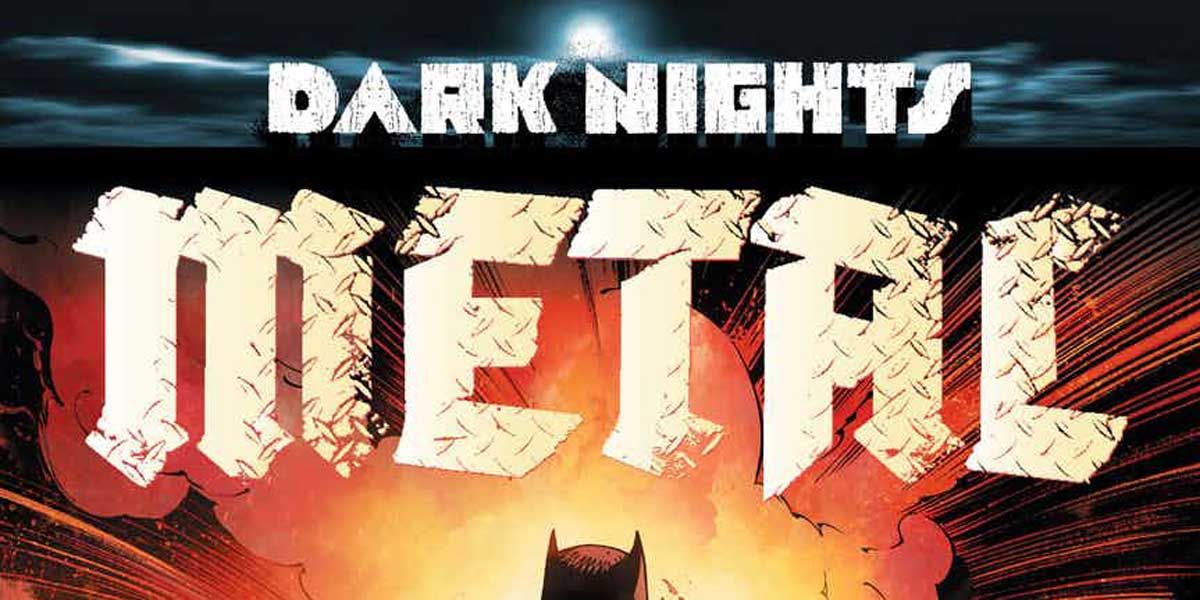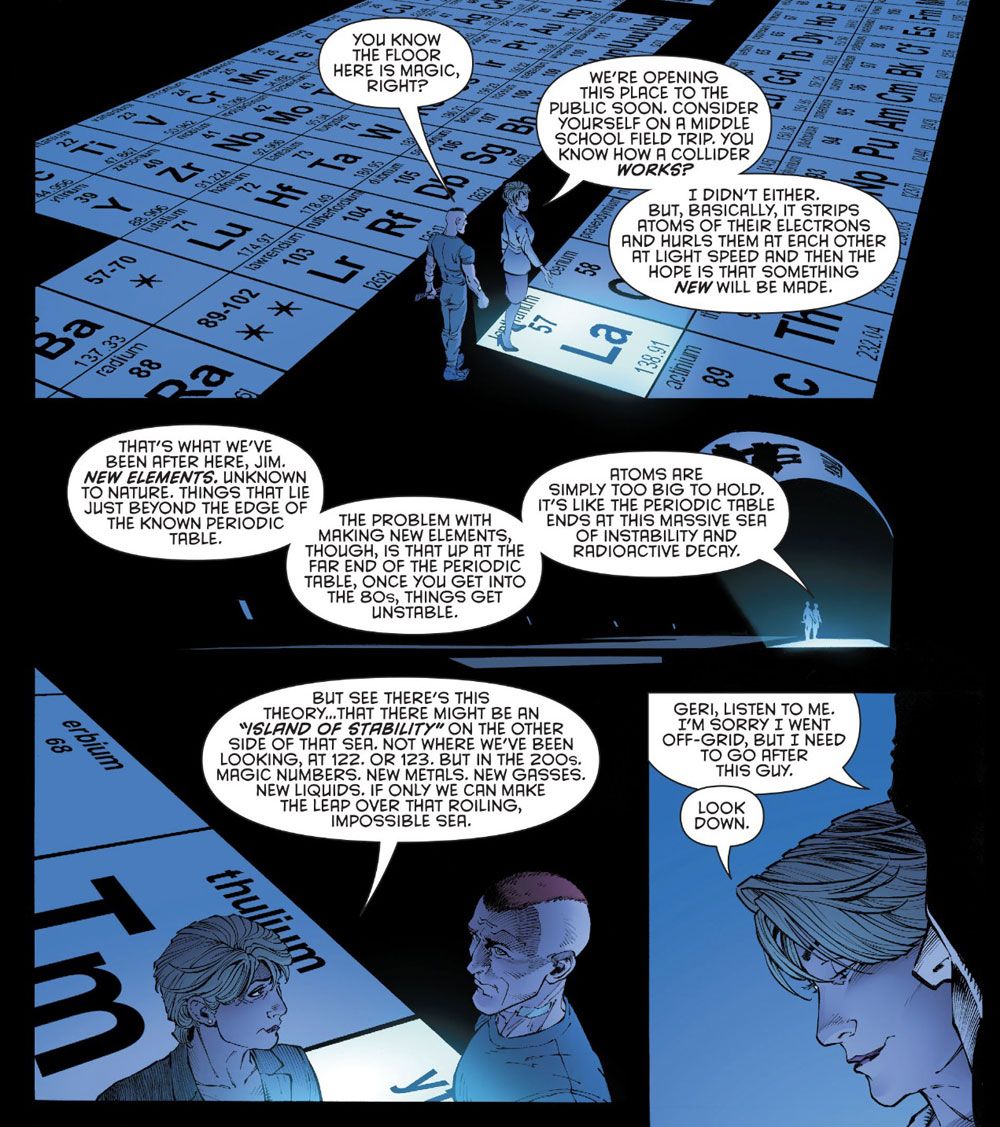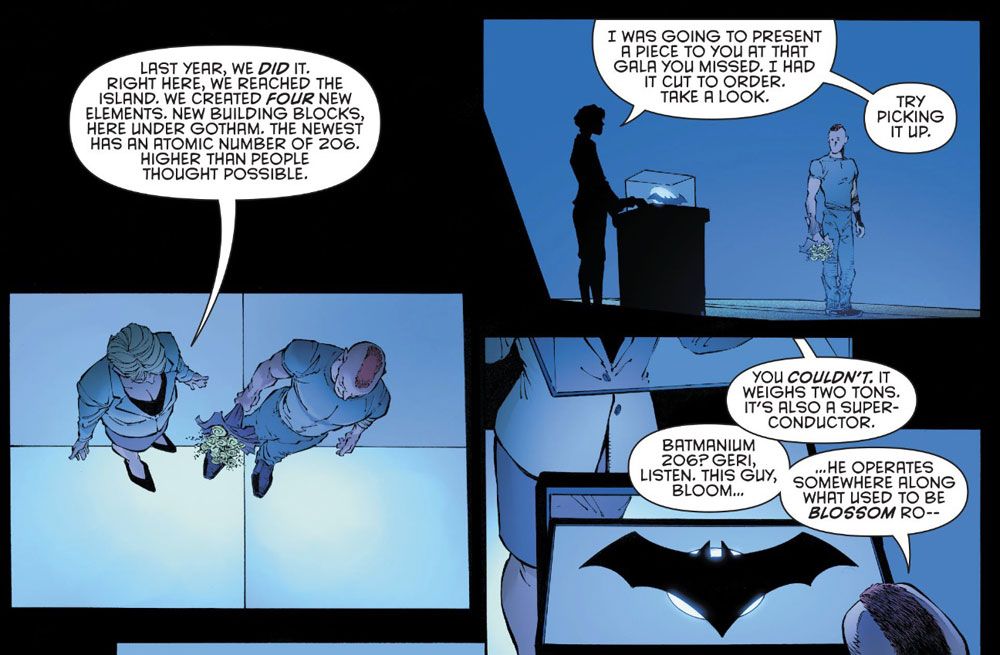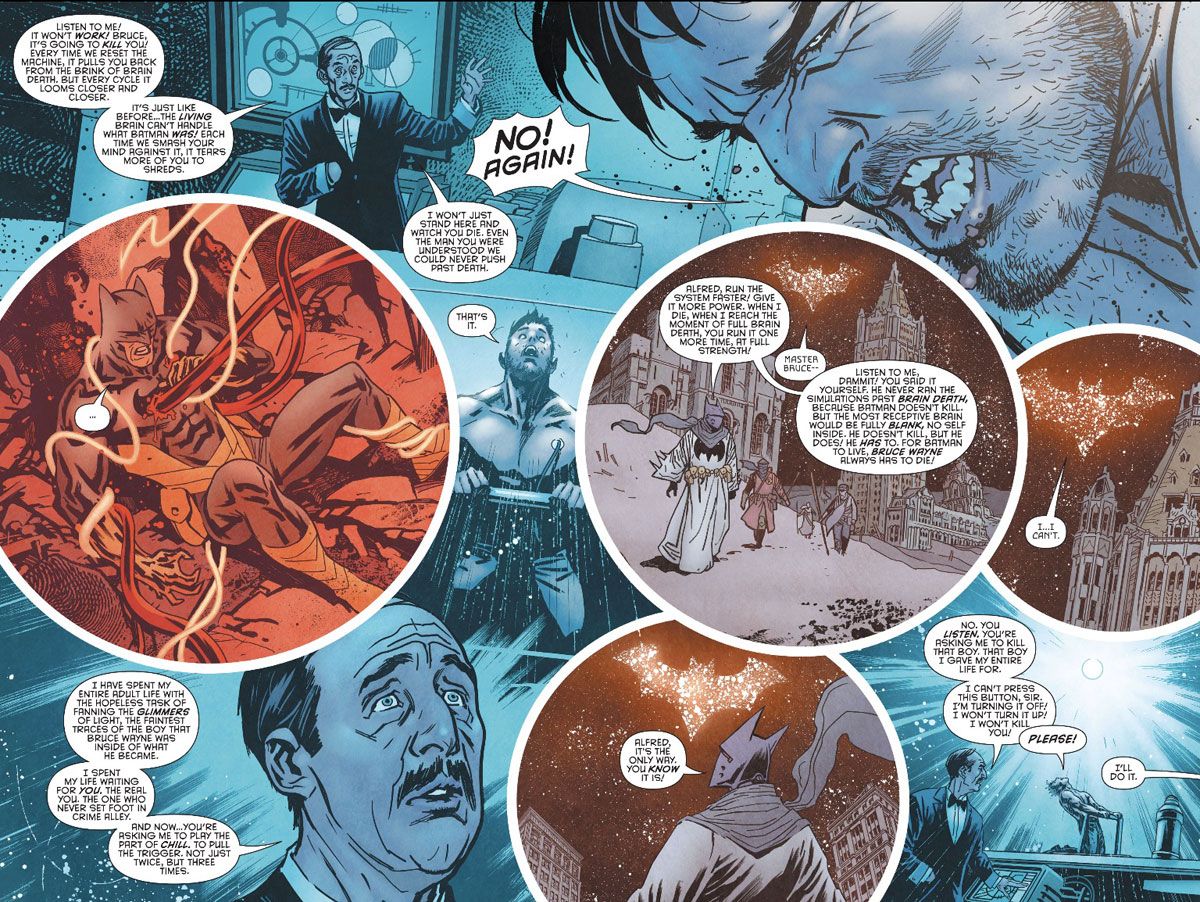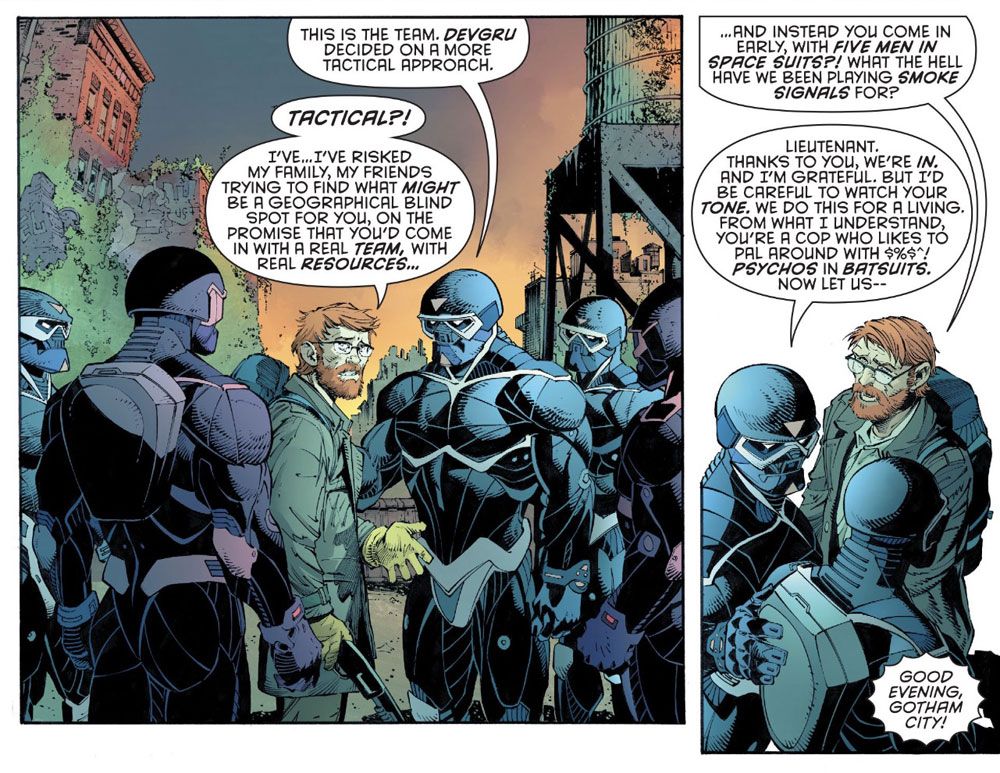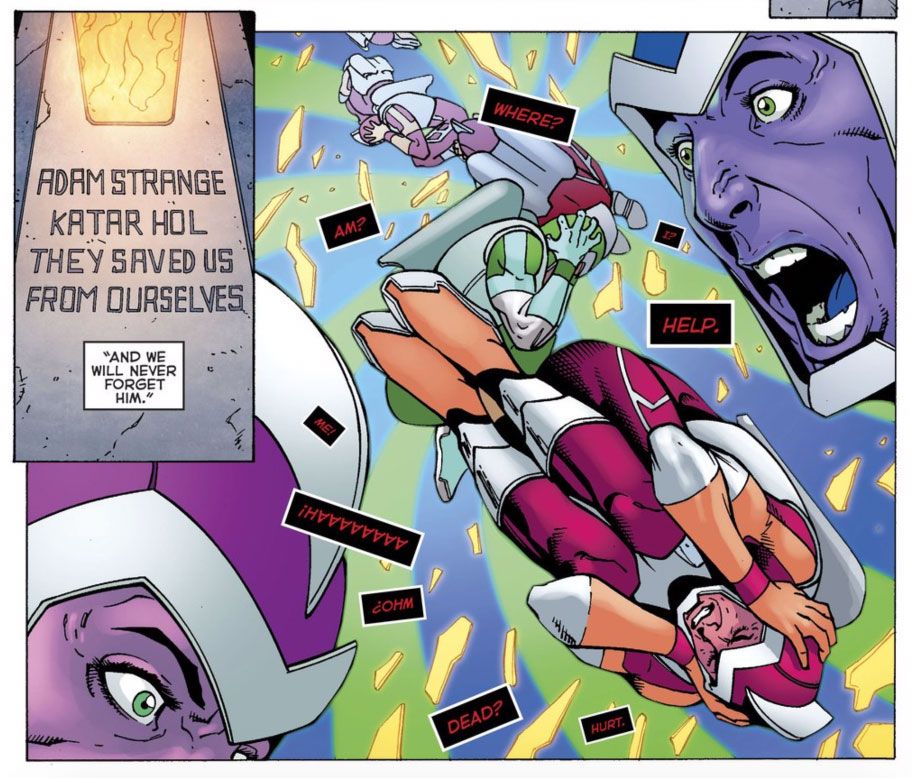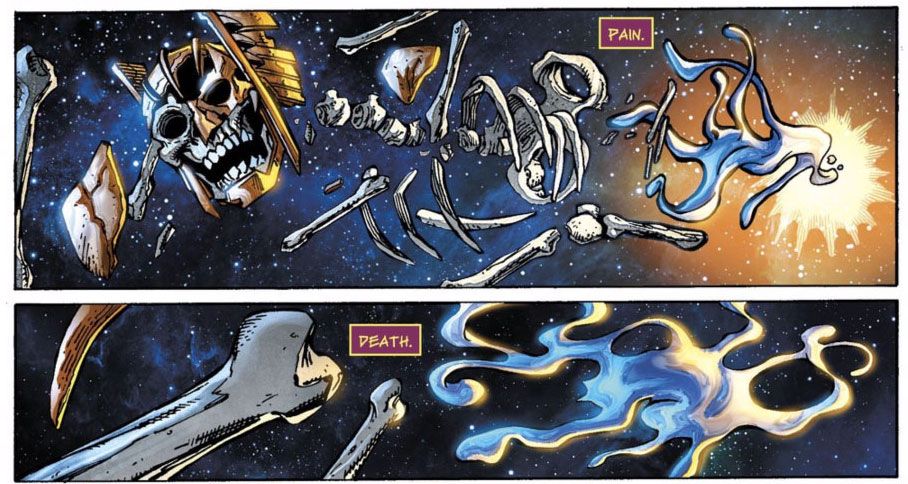There are challenging times ahead for the DCU, and they're coming via the much awaited reunion of creative duo Scott Snyder and Greg Capullo and their new Batman-centric event, “Dark Nights: Metal.” The main event follows prelude books “Dark Days: The Forge” and “Dark Days: The Casting” which will be penned by Snyder and James Tynion IV, with a revolving art team of John Romita Jr, Andy Kubert, and Jim Lee.
Snyder took to WonderCon's stage with his collaborators to make the big announcement, proclaiming that “Dark Nights: Metal” is something that he and Capullo have been working towards since the very start of their time working on Batman, far before Rebirth took hold. He went on to insist that there have been clues peppered throughout not just “Batman” books, but DC’s entire line.
With all of that in mind, it’s time to start digging for these clues. Has the secret of "Metal," and tangentially, the whole of Rebirth's future, really been staring fans right in the face for so many years?
PERIODIC
During their panel at Dallas Fan Expo, Snyder singled out the finale arc of he and Capullo’s “Batman” run, “Superheavy” as holding some of the “biggest clues” for the trajectory of “Dark Nights: Metal,” and then went on to elaborate that some of the most obvious signals could be found in the periodic table motif.
“Batman” #45 includes a moment where acting Batman, Jim Gordon, visits the mysterious, filthy rich (and almost undoubtedly Court of Owls connected) Geri Powers, current president of Powers International, and financial and intellectual backer of the GCPD’s Batman suit efforts deep within a collider beneath the city. Powers explains to Gordon in what now reads almost too obviously as a parable that Powers International has been trying to find new element -- things that are just beyond the edges of the periodic table -- and then even confesses to Gordon that they’ve been successful.
In fact, they’ve been successful not once, but four times.
The first of their new elements is where the arc gets it’s name. An element called “Batmanium”, number 206, that is so dense that even a small Batarang sized chunk of it weighs close to two tons. “Superheavy” indeed.
Interestingly enough, Geri declines to explain what the other three elements they’ve invented are but drops this cryptic bit of information on Gordon after he expresses his concern about the collider’s safety:
“There are thirty thousand [colliders] in the United States alone. All like this, thrumming away beneath towns and cities and fields. Little universes being created and destroyed, moment by moment.”
This, perhaps even more than the new element itself, is interesting, given the scant handful of cover images we have to work from right now. The finished cover for “Dark Days: The Forge” showcases Batman in what appears to be some sort of Bat-drone infested dystopia -- perhaps a Gotham of the future? Or maybe another reality altogether?
Is it possible that Geri’s metaphor about the creation and destruction of realities wasn’t so metaphorical after all? And what were the other three artificial elements? What has Powers International been doing since the start of Rebirth, anyway?
BATMEN OF THE MULTIVERSE
It’s worth noting that both Snyder and DC Comics co-publisher Dan Didio spoke pointedly about the implications of “Dark Nights: Metal” for the DCU at large, explaining that the consequences will be far reaching outside of Gotham, even outside the DC multiverse itself, so the suspicion of alternate realities coming into play is a pretty valid one to have.
It’s also worth noting that Snyder and Capullo’s run tiptoed around the subject ever so slightly as it came to a close.
While Bruce is working to regain his memories, issue #49 is inter-cut with double page splashes of strange, uncanny worlds in which Batman is cast as various genres of hero across varying settings. The splashes, in the context of the story, read as an extended metaphor for the nature of Bruce’s own memory and the way he conceptualizes himself and his role, but, with the looming threat of the multiverse itself encroaching around Gotham, it’s hard to ignore the other implications.
Namely, that in regaining his memories, Bruce was somehow catching a glimpse at different universe’s incarnations of himself in a literal rather than figurative sense....Maybe something spurned on by the Powers’ colliders work?
Also, Snyder noted during the panel that “Metal” will be pulling from sources beyond just his and Capullo’s own run, and specifically sited tapping into Morrison’s work with the character -- a run that made a specific effort to fold in every bizarre corner of Bruce Wayne through the multiverse it could get it’s hands on.
More interesting still, Tim Seeley’s work in “Nightwing” has taken the time to reintroduce some elements of Morrison’s run into Dick Grayson’s story as well, with Professor Pyg as a newly reinvented villain and Dick maybe-or-maybe-not getting a first hand look at the multiverse via the business end of one of Pyg’s weapons. The “Nightwing” team has yet to be officially announced in conjunction with any “Dark Nights: Metal” tie-ins (in fact, no one has) but it’s extremely unlikely that a Batman-centric event will pass up an opportunity to tie into "Nightwing."
Morrison easter eggs, and nods to the multiverse are definitely something to keep an eye on all throughout Gotham as the tension for the event builds.
MILITARY INDUSTRIAL COMPLEX
Alternate reality weirdness wasn’t Morrison’s only contribution to the Batman mythos. He also kicked off the (now mostly defunct) Batman, Inc effort wherein Bruce decided to “industrialize” his own super heroics on an international scale by recruiting other superheroes as the “Batman” of their own respective countries.
While this idea and ongoing book did carry over into the New 52, it quickly dropped off once the run was completed and the idea and many of the characters invented for it were lost to time as Snyder and Capullo’s “Batman” solo title continued on. However, the echos of Batman, Inc have shown up time and time again as a thematic motif through the vast majority of their work.
With Jim Gordon’s acceptance of the Batman mantle, the GCPD and Powers International launched an effort to create an “army” of Batman mech suits to be used by trained personnel in Gordon’s stead. Later, in the Rebirth run of “Detective Comics,” the Colony, a rogue military branch was revealed to be training soldiers in Batman’s own fighting techniques to form a sort of rogue, swat team that would function outside of any governmental (or moral) supervision.
In Snyder’s own “All Star Batman,” a reinvented version of the Blackhawk Squadron has recently been given a supporting role as a sort of shadow ops military team of indeterminate origins who may or may not have been working behind the scenes as far back as the “Zero Year” arc. What's more, Bruce's own efforts to clone himself and his memories to achieve a sort of artificial immortality, a Batman that would live on forever, were in part what granted the original Bruce his memories back in the first place.
The theme of people wanting to weaponize and mass produce “Batmen” of their very own -- for better or for worse -- has been a subtle tether running just beneath the surface of the Gotham-centric books for nearly eight years, and is certainly something that could be well on it’s way to getting a massive payoff in “Dark Nights: Metal.”
NTH METAL
Both Snyder and Capullo made sure to emphasize the fact that they weren’t just looking in Gotham for inspiration for the event, while both Lee and Didio have mentioned both Hawkman and the Nth Metal by name in conjunction with the story.
The most recent appearance of Hawkman was this year in the aptly titled mini series “The Death of Hawkman,” where Katar and Adam Strange faced off against Despero for the sake of Rann and Thanagar’s future. As you may have guessed, the story ended with Hawkman dying, but perhaps more interestingly, in the process Adam Strange was seemingly launched...well, somewhere.
His current status remains completely unknown as he was last scene tumbling through a multi-color void, seemingly completely disoriented.
Hawkman’s death came as the result of a hail mary attempt to defeat Despero, who, unsurprisingly, was looking to take over the Nth Metal inside his body to add to his own power. Despite Katar and Adam’s tragic victory, the final pages of “Death of Hawkman” show Katar’s skeleton floating in the void of space before a hand manifests from nothingness and crushes his skull -- Despero reformed and unbeatable.
So far, none of the information presented about “The Forge,” “The Casting,” or “Metal” has confirmed a main villain, but if we had to guess at one, Despero seems to be a pretty likely candidate. After all, Dan Didio himself just recently confirmed that “Metal” will involve the return of Hawkman, and the two of them most certainly have a score to settle.

